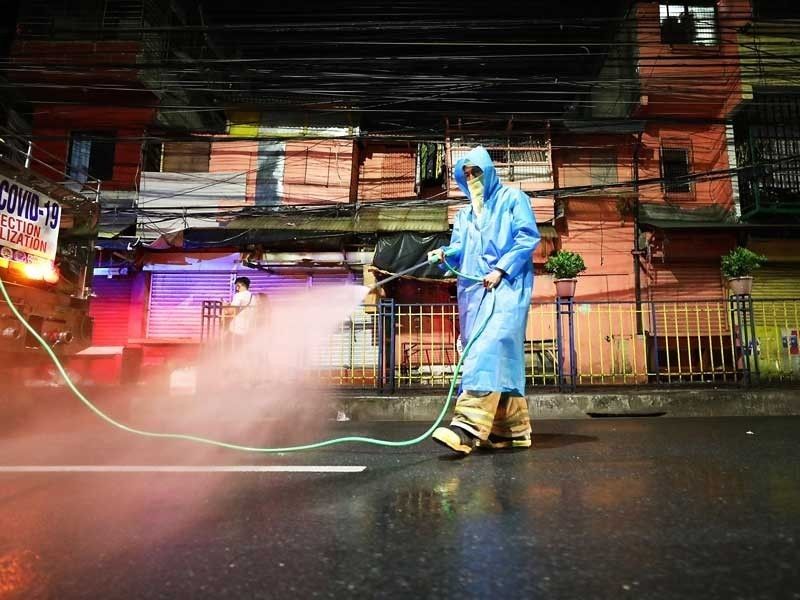A guide to home care for asymptomatic, mild COVID-19 patients

MANILA, Philippines — As the spike in COVID-19 cases strains hospitals and isolation facilities in Metro Manila and surrounding areas, many Filipinos who tested positive for COVID-19 opt to isolate and recover in their homes.
Home care could be considered for low-risk individuals who are asymptomatic or have mild symptoms, said Dr. Anna Ong-Lim, a pediatric infectious disease expert.
"Because the healthcare capacity is extremely challenged and because majority of the cases is expected to be mild, home care needs to be an option for our family members, for people we know who have suspected or confirmed COVID-19," Ong-Lim said in a virtual forum last Saturday.
To date, the Philippines has reported over 876,000 COVID-19 cases, of which 157,451 are active. Of the active cases, 97% are mild, 1.75% are asymptomatic, 0.5% are critical, 0.6% are severe and 0.32% are moderate.
Ong-Lim, however, stressed the decision to allow home care for an infected individual will depend on different factors.
Who can qualify for home care?
Home isolation and care may be suitable for people who are asymptomatic or those with mild to moderate symptoms without risk factors, Ong-Lim, who is also a member of the DOH-Technical Advisory Group, said.
This means a patient is not experiencing shortness of breath or difficulty in breathing. A person’s respiratory rate should also be less than 30 breaths per minute and the oxygen saturation in room air should be at least 94%. A pulse oximeter measures a patient’s oxygen saturation level.
According to the interim guidance of the World Health Organization, patients who do not qualify for home care because of risk factors for severe diseases include the following:
- Those who are above 60 years old
- Smokers
- Those who are obese
- Those who have non-communicable diseases such as cardiovascular disease, diabetes mellitus, chronic lung disease, chronic kidney disease, immunosuppression and cancer.
What is the appropriate home setup for COVID-19 care?
Patients who are asymptomatic or those with mild disease who do not require emergency interventions or hospitalizations can be cared for at home as long as the following requirements are met:
- Separate room and bathroom so people can be isolated properly
- Room where a patient stays must have good airflow
- Door is kept closed
- Implement a good delivery system for the daily needs of that person so there will not be a lot of contact between the infected individual and the rest of the household
Ong-Lim said only those who can manage themselves while isolated should be selected for home care.
“If you implement home care for your family… all you need to do is leave stuff at the door so they can pick it up and fend for themselves,” she said.
The Department of Health stressed that isolation is encouraged only when these requirements are met: the patient should have a separate room and toilet, and should not be living with senior citizens, people with co-morbidities or pregnant women.
If the conditions for the implementation of infection prevention and controls are not present in homes, patients are advised to go to temprorary treatment and monitoring facility.
How to provide care for COVID-19 patients at home
Here are the infection prevention and control recommendations of the WHO:
- Limit the patient’s movement around the house and minimize shared spaces such as kitchen and bathroom. Ensure that shared spaces are well ventilated.
- Household members should avoid entering the room where the patient is located. If that is not possible, maintain a distance of at least one meter from the infected person.
- Limit the number of caregivers. The caregiver must be a person who is in good health and has no underlying chronic conditions.
- Visitors should not be allowed in the home.
- Perform hand hygiene.
- Provide medical mask to the patient. Mask must be worn as much as possible and changed whenever wet or dirty from secretions.
- Discard or clean materials used to cover the mouth and nose.
- Carers should wear a medical mask that covers their mouth and nose when they are in the same room as the patient.
- Avoid direct contact with patient’s body fluids.
- Do not reuse medical masks or gloves unless the gloves are a reusable product such as a utility glove.
- Clean and disinfect surfaces that are frequently touched in the room where the patient is being cared for.
- Use dedicated linen and eating utensils for the patient. Place contaminated linen in a laundry bag.
- Waste generated at home while caring for a COVID-19 patient during the recovery period should be packed in strong bags and closed completely before disposal.
- Avoid other types of exposure to contaminated item from the patient’s immediate environment. For example, do not share toothbrushes, cigarettes, cutlery, crockery, towels, washcloths or bed linen.
Ong-Lim said a person who will be caring for a patient will need at least a face mask and face shield. “If you have other PPE available at home, then that would be helpful as well.”
A group of doctors released a set of infographics about home care for patients infected by COVID-19 in Filipino and Bisaya, making the information accessible to the public.
The infographics can be accessed here.
What should be in the COVID-19 home care kits?
Ong-Lim said the following items must be included in COVID-19 care kits at home:
- Personal protective equipment (or at least masks, shield, gloves)
- Cleaning and disinfection supplies such as alcohol, soap, bleach solution (dilute 45 ml per one liter of water). Ong-Lim said the bleach solution must be prepared daily because it might evaporate.
- Monitoring supplies: vital signs record, thermometer, BP cuff, pulse oximeter
- Medications for fever, cough and colds as well as patient’s maintenance medication
When to consult doctors? When to contact local government units?
According to the WHO, home-based care should be provided by health workers, if possible.
But Ong-Lim said that cannot happen in many instances because of the current “severe shortage of healthcare workers.” If a civilian or lay person is providing care, there must be an open line of communication between the caregiver and a trained health worker or public health personnel.
Health Undersecretary Maria Rosario Vergeire said Monday that those isolating at home should consult telemedicine providers such as the following:
- TelAventusMD: TelAdventusMD Facebook page
- MedCheck E-consult
- TrinityCare: 0917-1111-975
- Cloud PX
- HealthNowPH
- SeeYouDoc
“As soon as you experience the symptoms, it’s better that we have check-ups with telemedicine provider. If not possible, call the barangay emergency response team so doctors in your local government can check on you,” she said.
Ong-Lim said a patient should seek urgent medical care if he/she is having trouble breathing, chest pains, an inability to stay awake, and pale, gray, or blue-colored lips.
Hospitals such as The Medical City have COVID-19 home care programs for people suspected of or positive for COVID-19. There are three packages, depending on the patient's condition.
Aside from the number of their Barangay Health Emergency Response Teams, households must have a list of nearest hospitals or clinics and their contact numbers.
- Latest
- Trending




























